On an early November morning – in anticipation of witnessing my first colors of the long-awaited koyo autumn leaves season – I boarded one of the earliest north-bound trains departing from Tokyo Station. By the time the Shinkansen arrived at Koriyama Station, I barely finished my morning coffee and my final check on my three-day itinerary focusing on the Aizu region of Fukushima in search of the fall colors and samurai culture.
This was my first trip to Fukushima, rightfully praised for the beauty of its wild nature, and the only prefecture of the Tohoku region that I had not yet visited. As it turned out, I saved the best for last.
Aizu-Wakamatsu: Historical Town Still Full of Life
In Fukushima’s Aizu region, I found more than what I expected. I not only experienced vibrant fall colors, but gracefully-preserved castle towns rich with samurai culture, and stores allowing visitors to go beyond the museum experience and get a peek at this region’s history and culture that once witnessed landmark historical events.
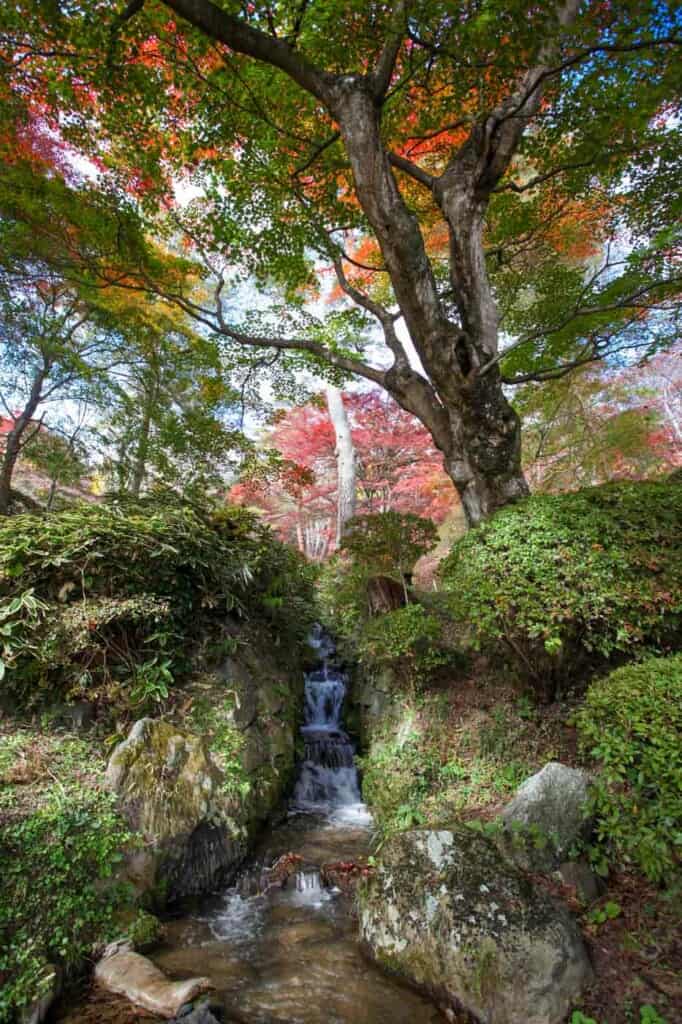
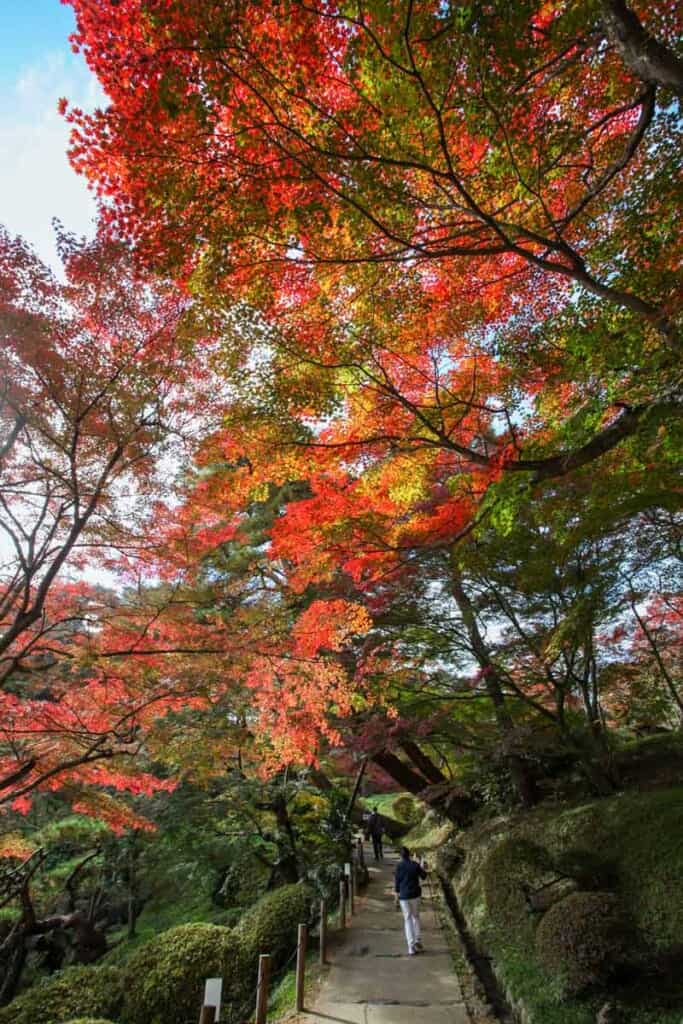
I also came across vibrant rural towns with locals willing to share their home’s unique history and culture with me. Not only the elegant castles or the divine atmosphere of spiritually charged shrines stand out for me — I also enjoyed the mundane moments in small ramen joints or soba shops and families and elderly town ladies catching up with their friends.
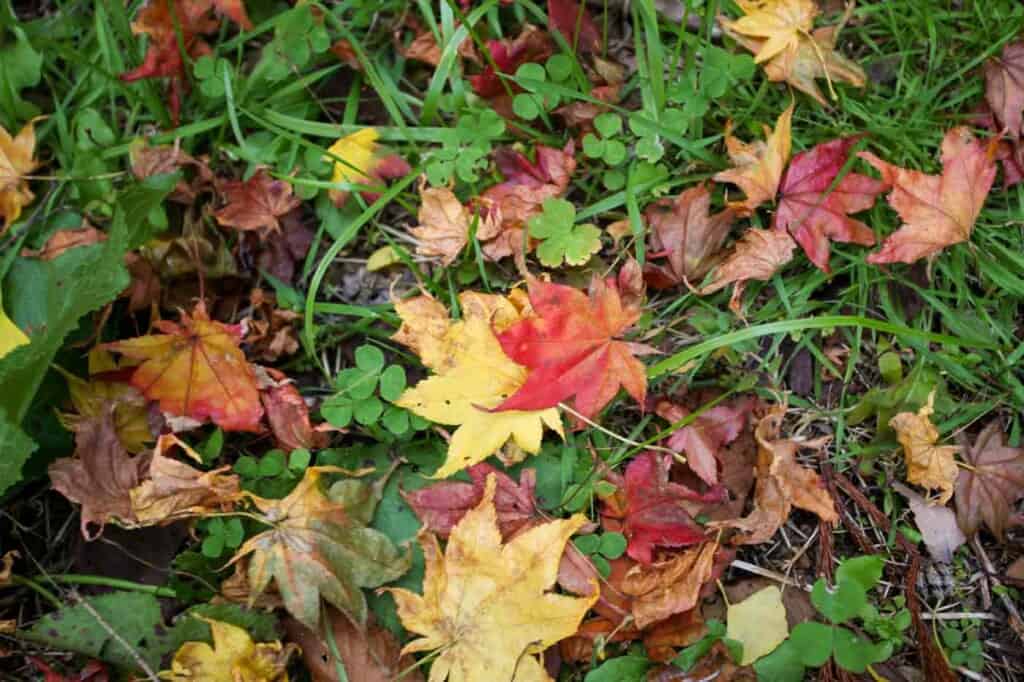
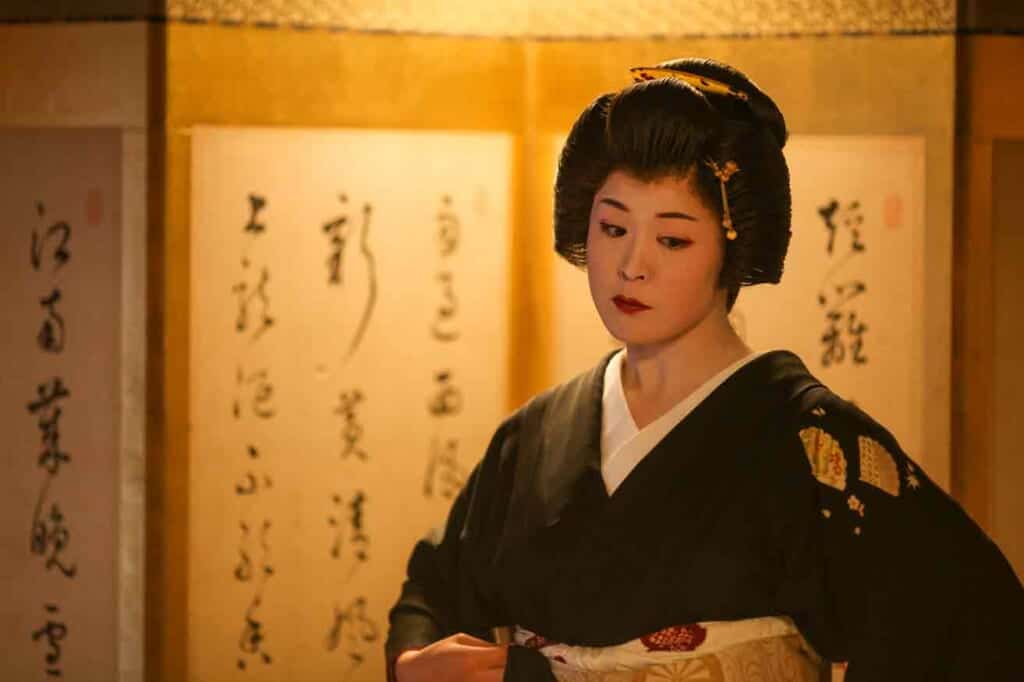
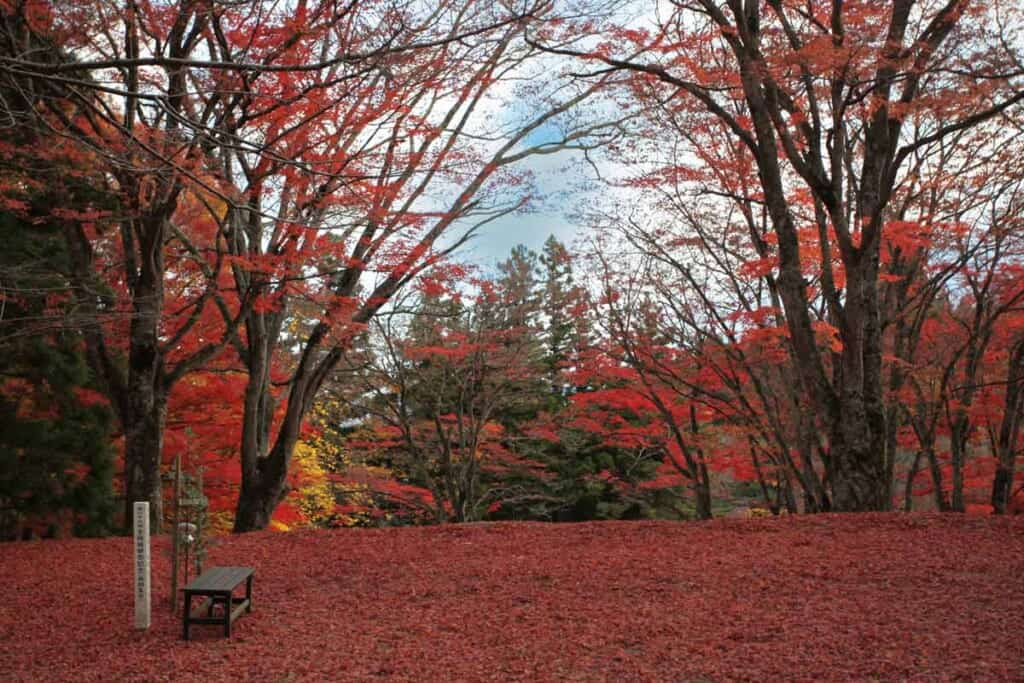
Basing myself in Higashiyama Onsen — a town 15-minute car ride away from Aizu-Wakamatsu, which features both traditional ryokan and hotel-style accommodation, I spent three days visiting castle towns, had my first Geisha encounter, or Geigi as they are called here, tasted the region‘s award-winning sake, took a boat ride on a movie inspiring river, and immersed myself in the fall colors in picturesque shrines and castle parks.
The History of Fukushima‘s Castle Towns
Aizu and its surrounding region felt like a traveler’s dreamland packing cultural, historical, and nature sites all within close proximity to each other.
Brief History of Boshin War and the Samurai Culture in Fukushima
Aizu and its surrounding areas – renowned for its historical devotion to the Tokugawa Shogunate – was home to some of the key battles of the Boshin War, which was among the main chain of events that ended the Edo Period (1603-1868) and kicked off the Meiji Restoration. Boshin War (1868-1869), also referred to as the War of Restoration, started near Kyoto and resulted from the confrontation between the ruling Shogunate and the groups wishing to restore the centralized monarchy under the Imperial Court‘s rule. The war ended in Hokkaido in 1869 when the last samurai surrendered to the imperial army.
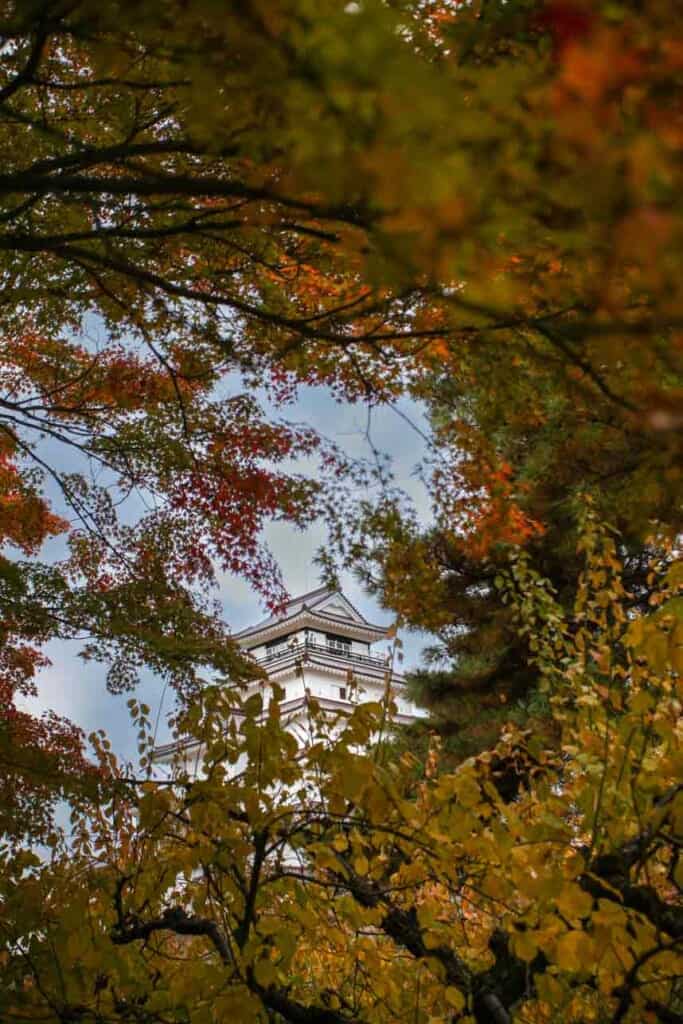
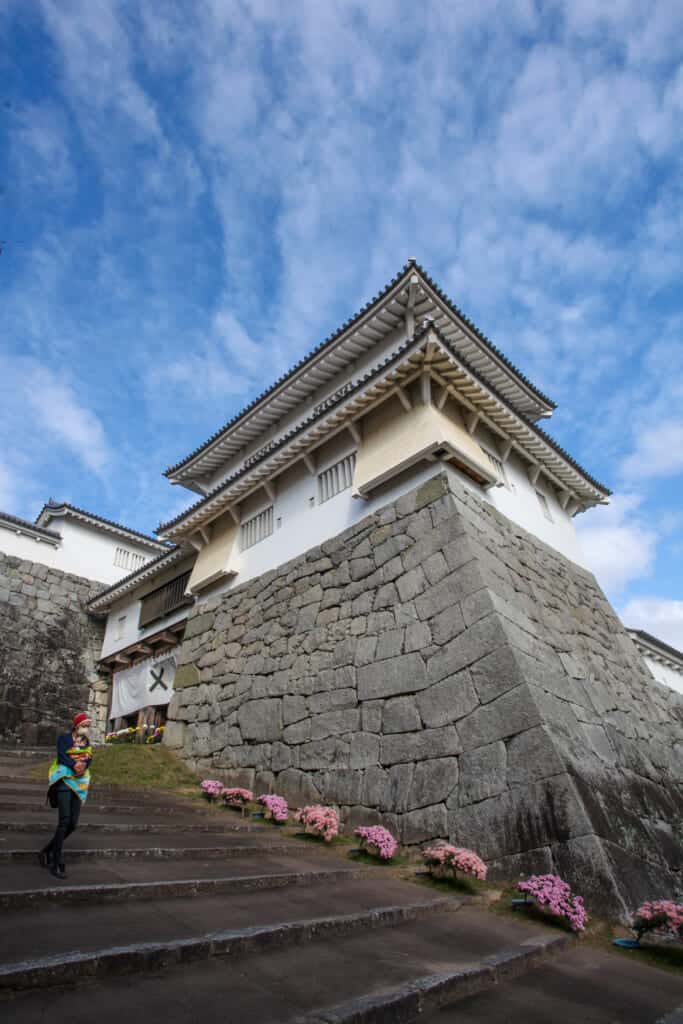
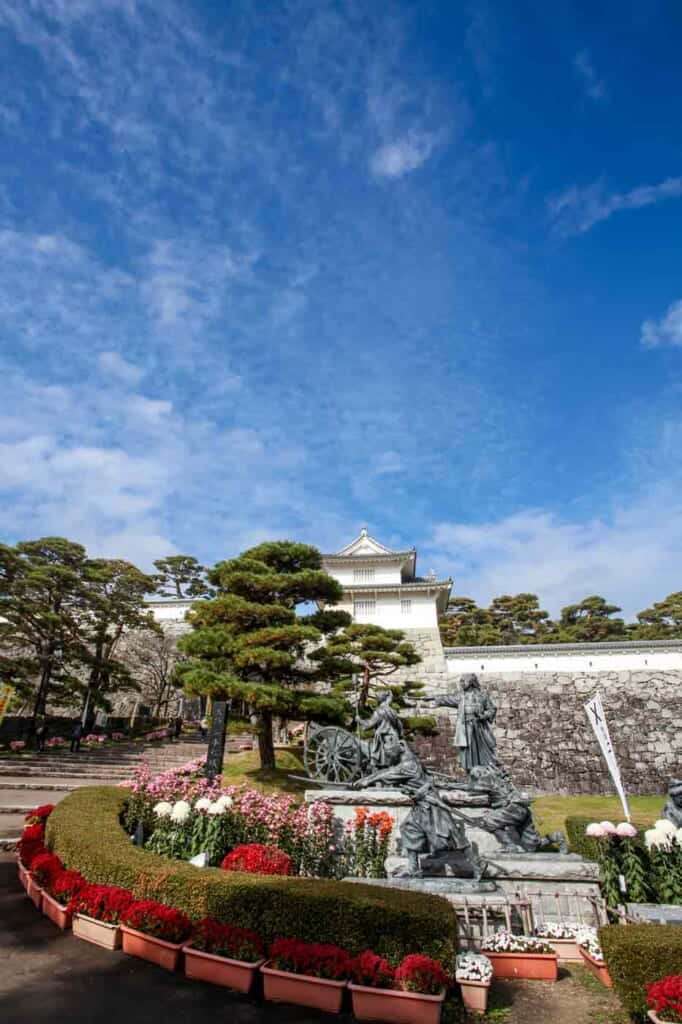
The main sites in Fukushima that relate to the Boshin War are Tsurugajo Castle in Aizu-Wakamatsu town and its lesser-known but equally splendid companion, Nihonmatsu Castle located in Nihonmatsu town.
Like any war, Boshin War inevitably gave rise to heartbreaking stories. While the vibrant atmosphere surrounding the castles contrasted the darkness of the civil war, the serenity of the castle parks and the tea houses gave me the time and space to reflect on the region’s history.
Nihonmatsu Castle: Encompassed by Autumn Colors and Flowers
Nihonmatsu Castle ruins, also referred to as Kasumigajo Castle, is worth a visit in every season but is particularly attractive during the koyo and sakura season, being home to more than a thousand cherry trees.
The castle which was originally built in 1414 has been entirely destroyed. But the elegant Minowa Gate, originally built from the timber from a sacred forest in Minowa Village and reconstructed in 1982, still allowed me to imagine the atmosphere during the era when the castle was home to Niwa Clan.
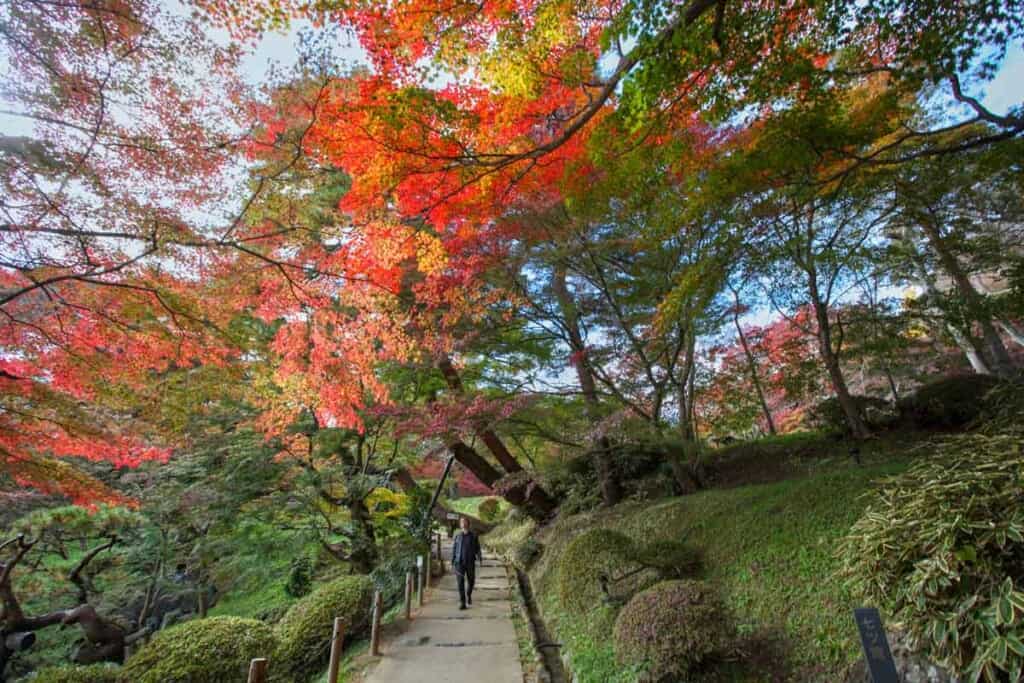
The visitors to Nihonmatsu Castle grounds are greeted with a statue erected in honor of the town’s courageous young boys who fought during the Boshin War. Despite the efforts of 62 young boys, age 13 to 17, who were called to support the limited forces of the Nihonmatsu Domain, the castle fell in a single day in 1868. Some sources heartbreakingly note that the young boys, referred to as Nihonmatsu Youth Corps, fought with swords taller than themselves.
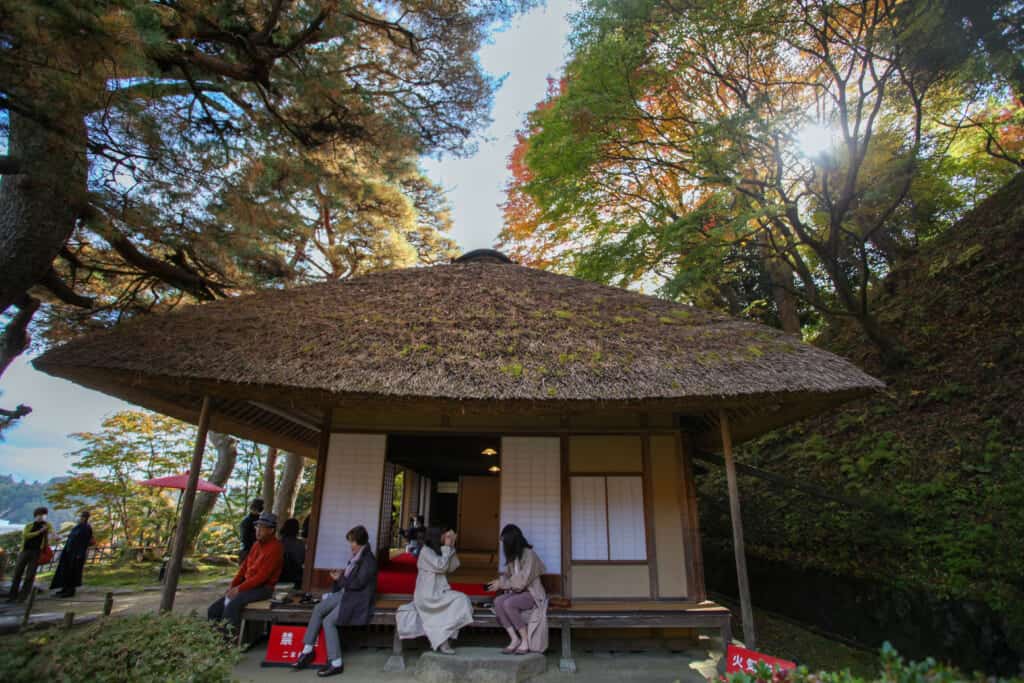
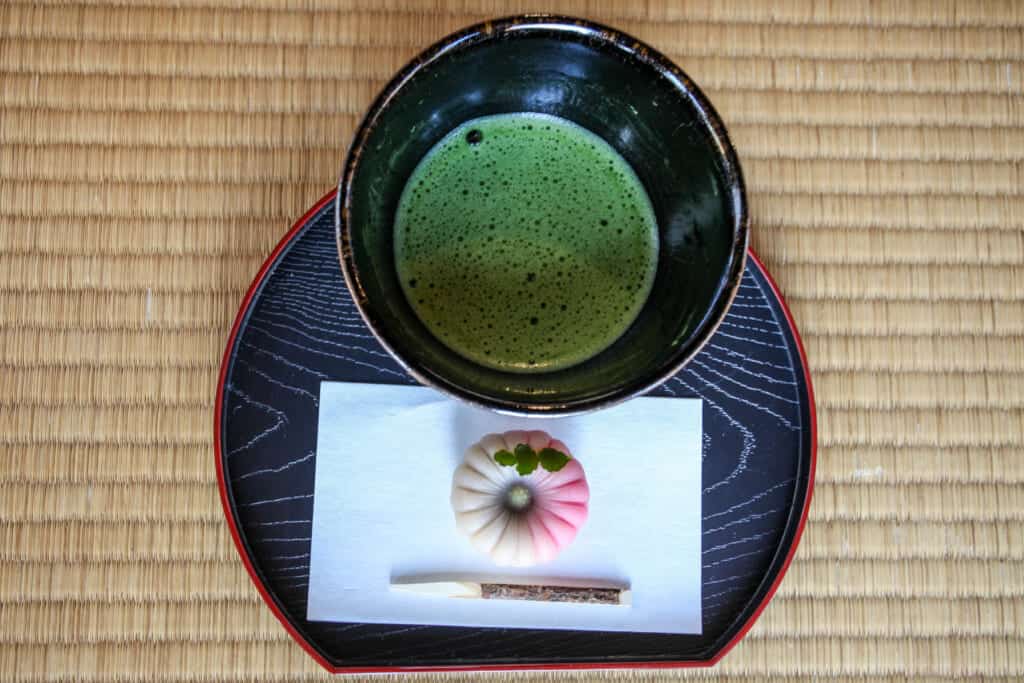
The old castle grounds are today turned into a prefectural park featuring a pond and a small waterfall. Senshin Tei is a wonderful place to admire the serene atmosphere unique to Japanese tea houses.
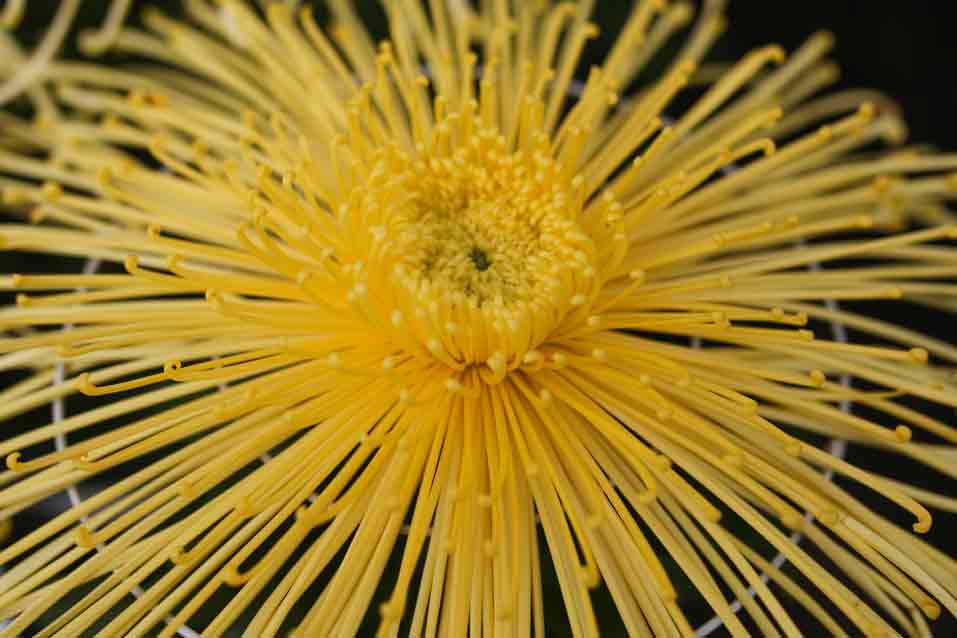
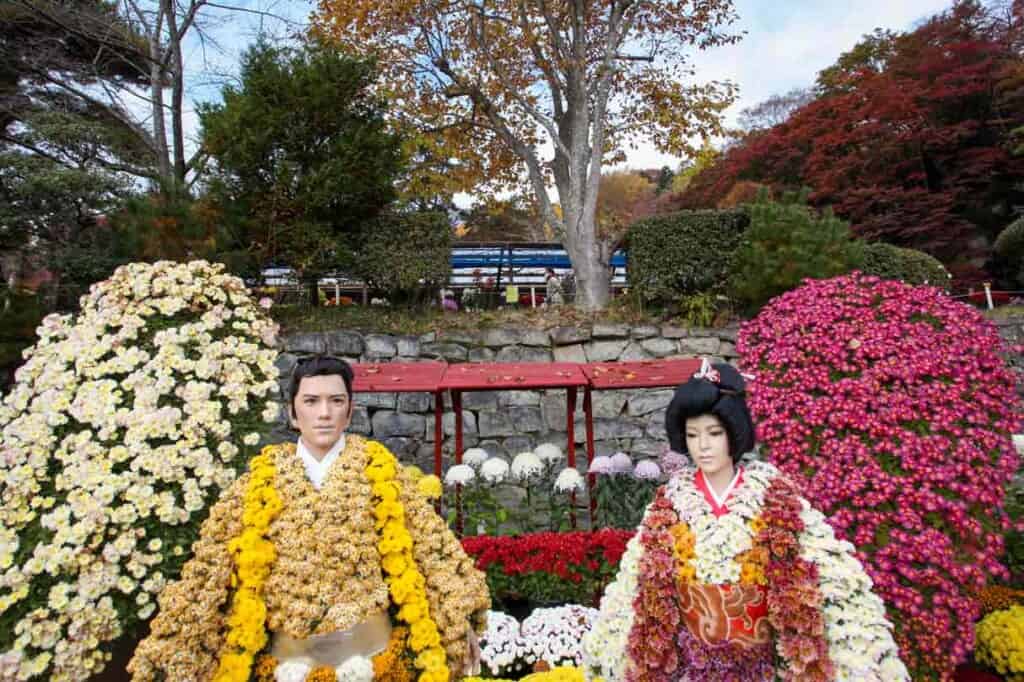
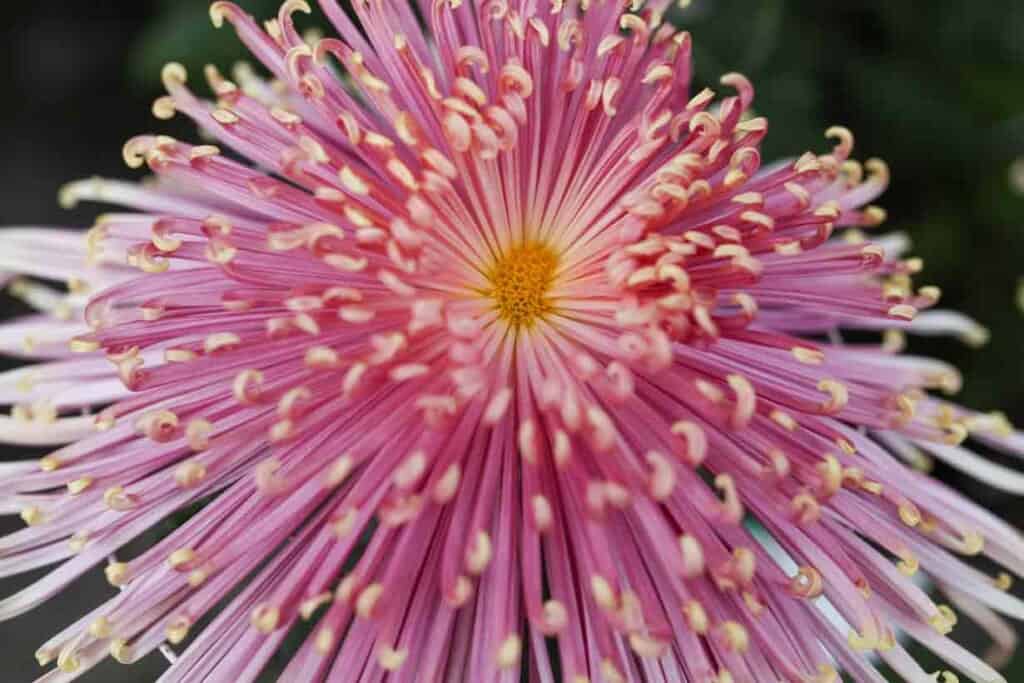
During the koyo season, you may also happen upon the annual Nihonmatsu Mum Festival that takes place from early October to mid-November. Thousands of chrysanthemum blossoms are put on display and decorated alongside life-size dolls, referred to as kiku ningyo, adding to the already colorful atmosphere of the autumn colors.
| Nihonmatsu Castle Park: Open all hours year-round, free admission, 20 min. walking distance from JR Nihonmatsu Station. |
Tsurugajo Castle: The Story of the White Tiger Unit
Despite the gray weather on the day I visited Tsurugajo Castle, the five-story high white castle building (originally built seven stories high) and its unique red tile roof, surrounded by tones of autumn leaves, still shone brilliantly. The castle, originally built in 1384, was home to a month-long battle during the Boshin War and witnessed another heartbreaking story concerning the young squads.
Byakkotai — the White Tiger Unit — was formed by a group of 305 boys, all sons of Aizu samurai, aged between 16-17. One of the squads belonging to Byakkotai, a group of 20 boys, got separated from the rest of the troops during the battle. The boys retreated to a hill overlooking the town and, by misinterpreting the surrounding fire and the chaos, assumed that they were surrounded by the enemy and committed seppuku, a ritual suicide, on the hill to avoid bringing shame to the Aizu domain by getting captured. Only one of the boys survived to tell the tale. The town still remembers its courageous boys and honor them with annual memorial events held by their graveyard.
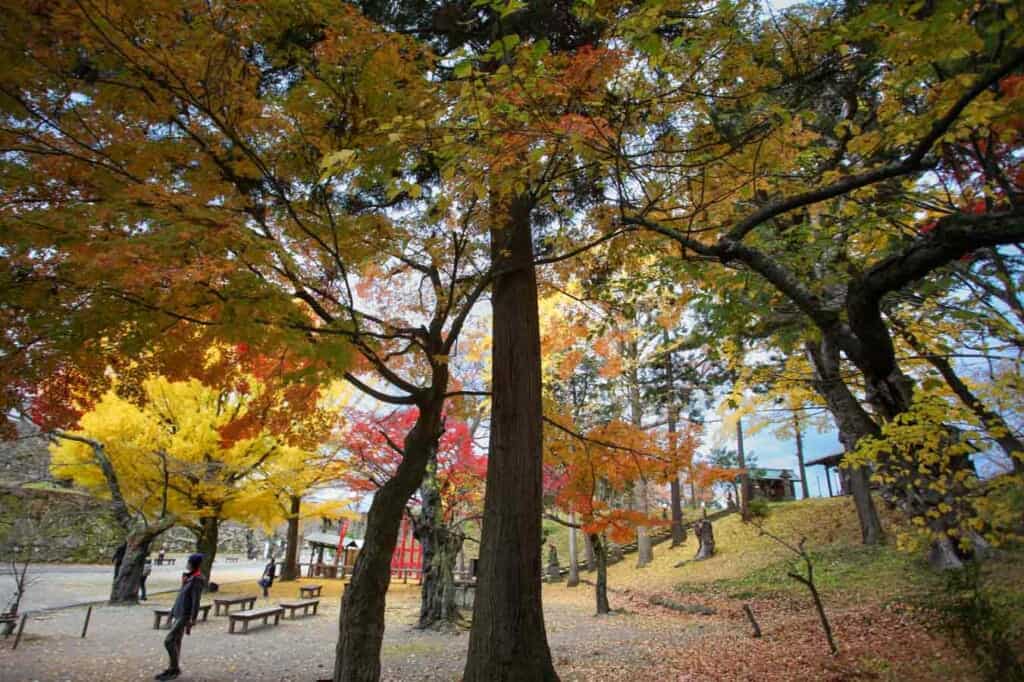
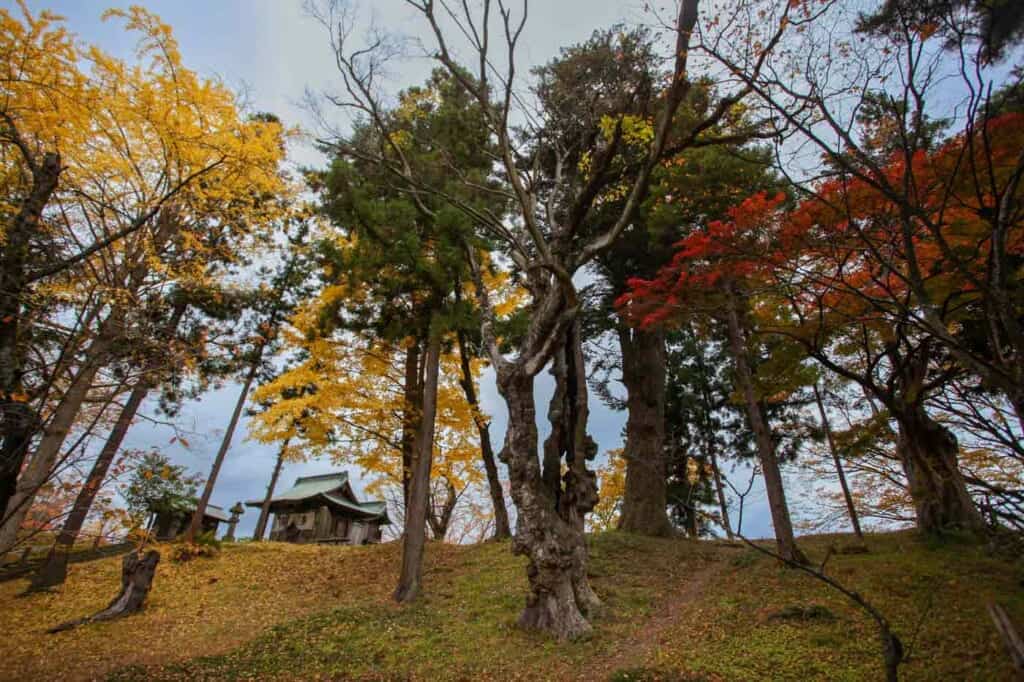
The entire castle complex comprised of the main castle structure, the castle park, the museum displaying armors from the castle’s lords, and Rinkaku Tea House, once home to tea ceremonies for feudal lords, deserves at least half a day visit.
| Tsurugajo Castle: Castle tower open daily between 8:30 am-5 pm, admission 410 Yen, 30 min. walking distance from Aizu-Wakamatsu Station, or 10 min. by bus to Tsurugajo Kitaguchi bus stop. |
Hanitsu Shrine: 350 Years Old Shrine Colored by Autumn Leaves
Hanitsu Shrine, which is deservedly referred to as one of the best places to experience the fall colors in Fukushima, is another place with a centuries-long history linked to Fukushima’s samurai heritage. The shrine was built in 1675 to enshrine the feudal lord Hoshina Masayuki, the founder of Aizu Domain.
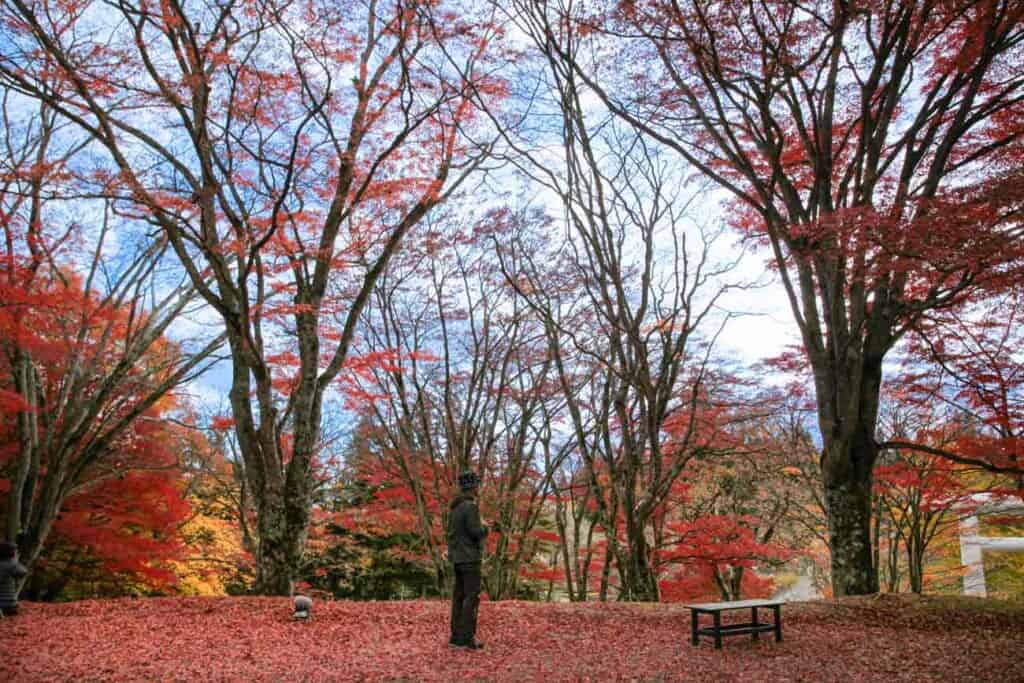
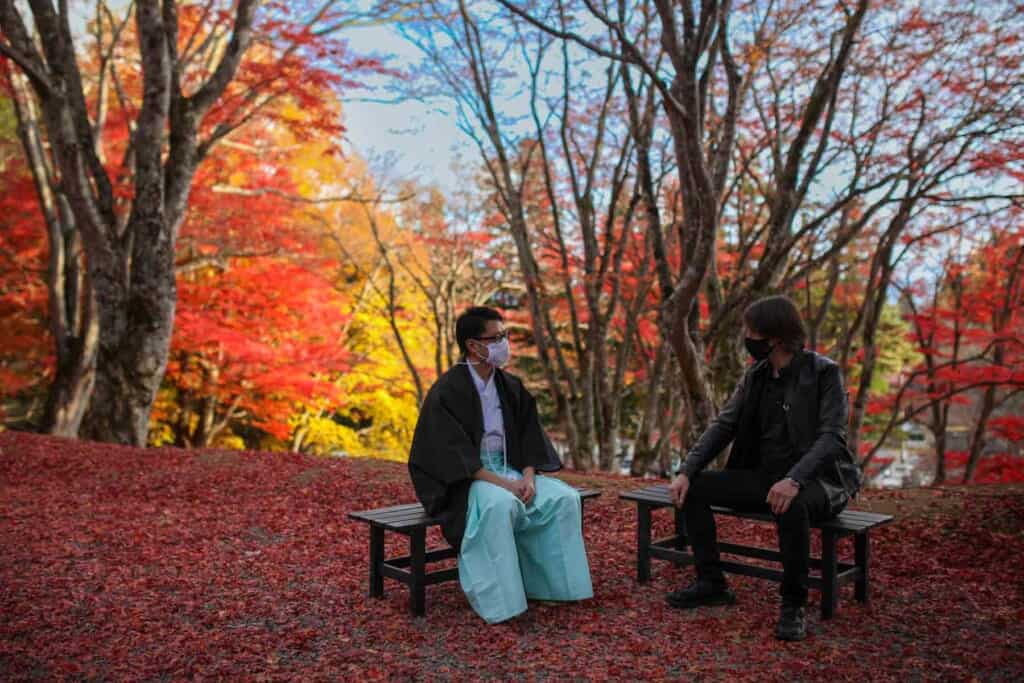
The visitors to the shrine are greeted by the large white tori. I was, however, immediately drawn to the stone stairs leading up to the main shrine grounds through the corridor of red autumn leaves. The shrine‘s friendly young priest noted that the shrine attracts many visitors, particularly during the koyo season.
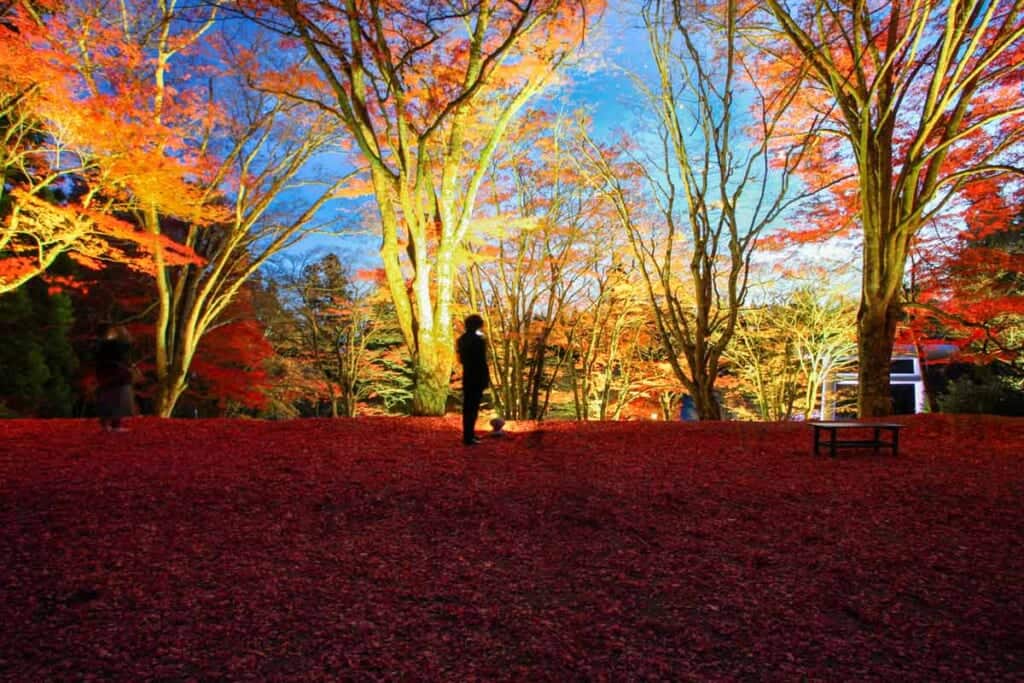
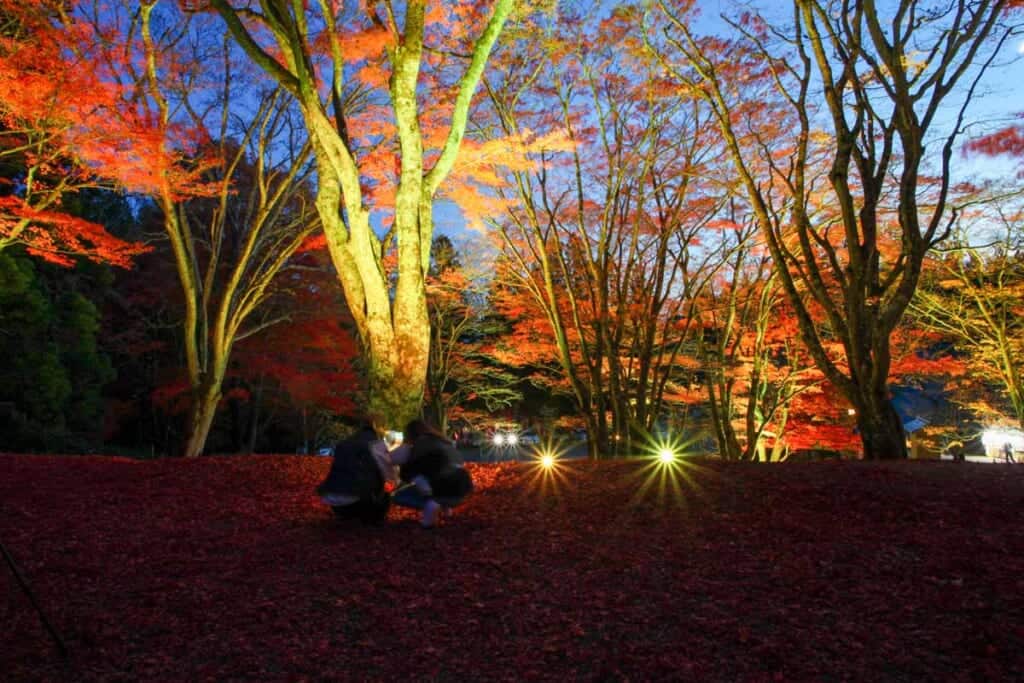
With leaf-covered grounds, the picturesque stone stairs, and the nightly illumination event during the autumn leaves season, it is easy to understand why.
| Hanitsu Shrine: 10 am-4 pm (except Koyo season when there is illumination event between 5 pm-7 pm), free admission, you can take a taxi (5 min.) from Inawashiro Station (JR Ban-Etsu West Line). |
Experiencing the Wild Nature of Tohoku in Fukushima
In addition to the sites combining Fukushima‘s samurai history with seasonal colors, the prefecture is also home to many wild sites presenting some of the best nature experiences that Tohoku has to offer.
Mugenkyo no Watashi: Mystic River That Inspired a Movie
Japanese movie buffs may already be familiar with the movie Aru Sendou no Hanasi – translated as “They Say Nothing Stays the Same” directed by Joe Odagiri. The movie featured in 2019 Venice International Film Festival tells the story of an elderly boatman earning his living by transporting people between the two sides of the river in his small boat. The anti-hero in the movie is not a person but a bridge, the construction of which threatens the boatmen’s livelihood but maybe more importantly the meaning of his life.
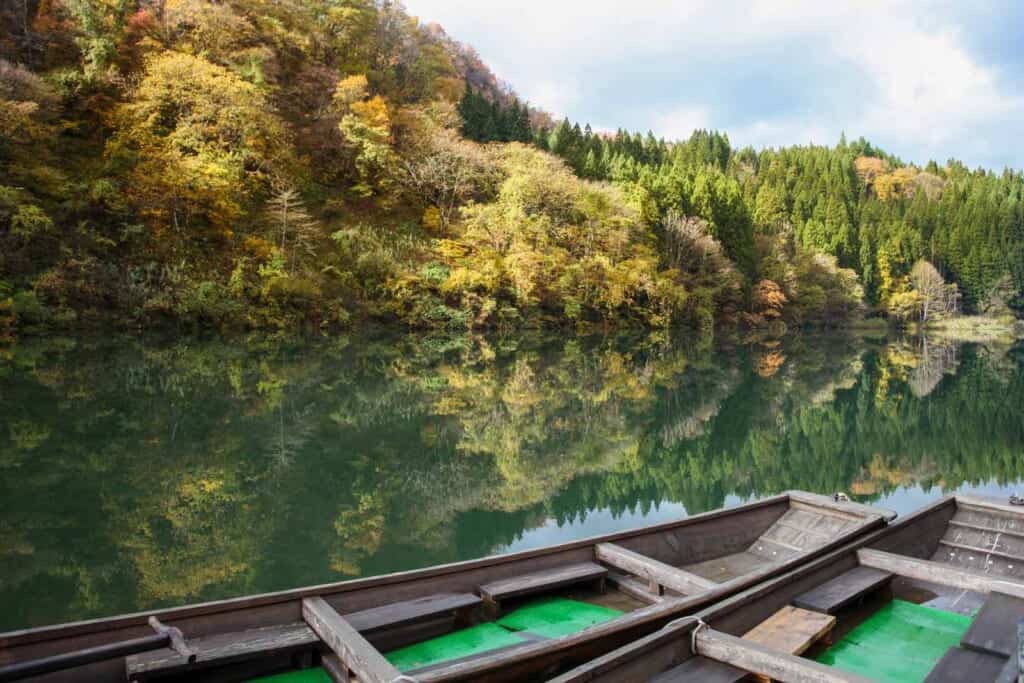
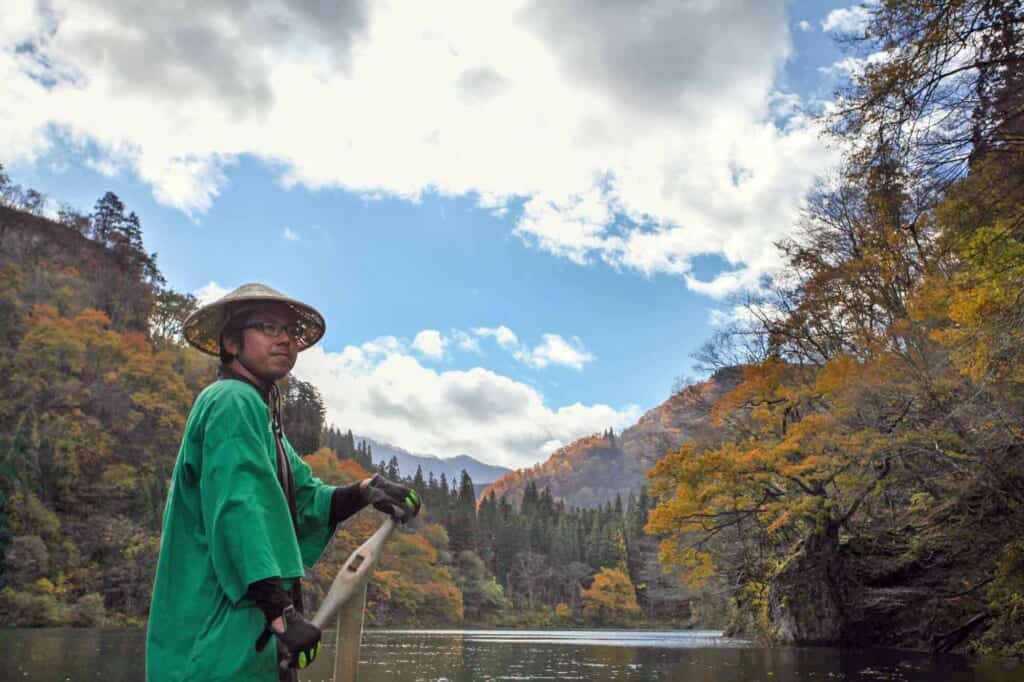
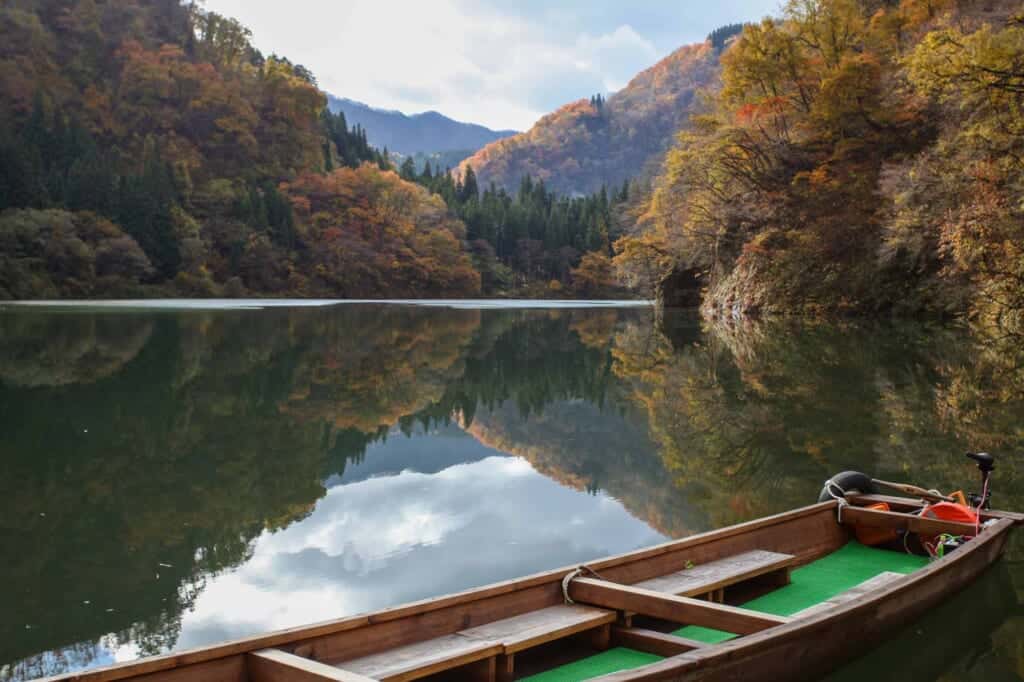
Mugenkyo, a ravine located on Tadami River – an hour away from Aizu-Wakamatsu – is the location of the movie and offers a delightfully secluded experience to experience the fall colors.
I was happy to visit the river on a sunny and windless day. The motionless river served as a mirror reflecting the fall colors. With little modern buildings surrounding the area, it allows you to imagine yourself in any era or a movie that you wish to be in.
| Mugenkyo no Watashi: Boat rides are available between April and November. For schedule and pricing info: Mugenkyo no Watashi Boat Tours, 25 min. walking distance from Hayato Station (JR Tadami Line). |
Artisanal Tastes and Experiences in Fukushima
Japan is a culinary heaven for many, and the tastes of Fukushima‘s Aizu-Wakamatsu, referred to as the Sake Kingdom, live up to the promise. The dining and drinking experience also pleased visitors like me who are equally invested in the overall visual experience.
Although I usually refrain from using the overly used term “authentic” to describe my travel experiences, my overall experience felt truly authentic in that nothing felt forced to appeal to the visitors while my host’s subtle gestures made all the difference.
Shibukawa Donya: Local Cuisine in a Setting True to the Store‘s Century Old History
Shibukawa Donya occupies a hundred-year-old merchant store originally used by a fish wholesaler. The restaurant is located on the historical street Nanokamachi Street featuring Japanese-style wooden stores and townhouses from Taisho Era (1912-1926) lined next to each other.
Just like the street, the interior of Shibukawa Donya also remains true to its roots and history. The moment that you enter the wooden building, you are transported into a different era. The decoration, the lighting – everything is carefully preserved and set to make sure that the diners steal a few hours away from the modern world waiting outside.
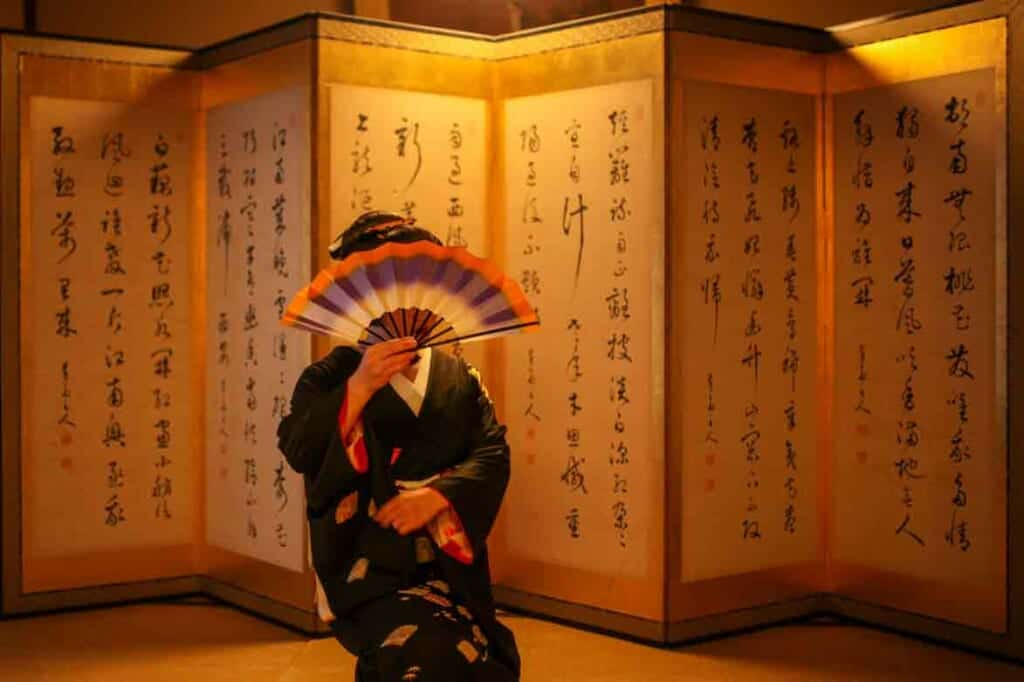
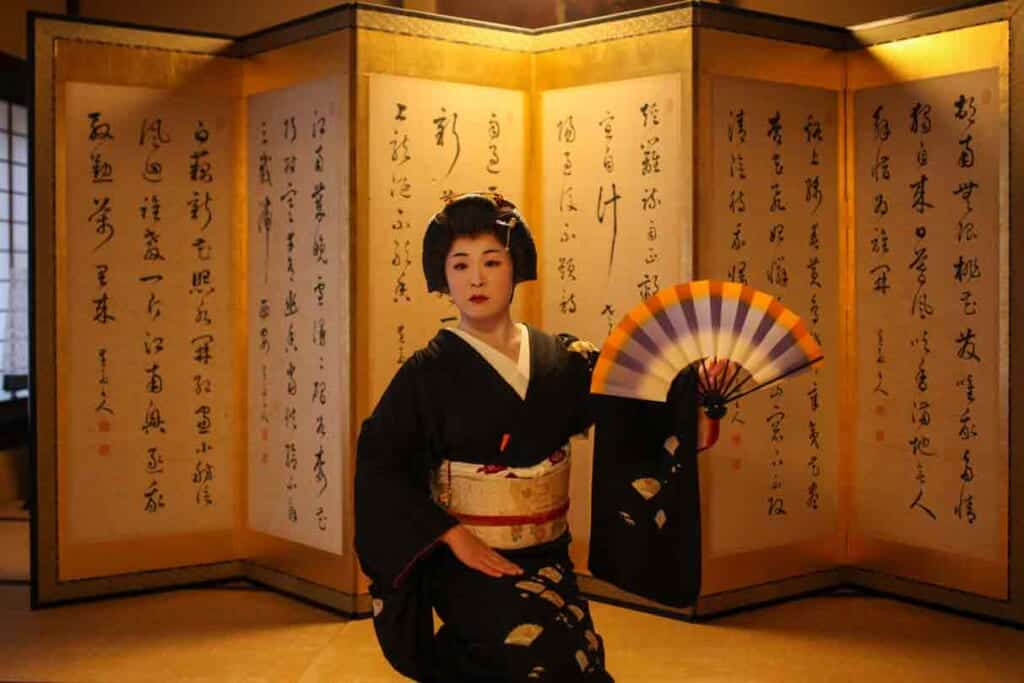
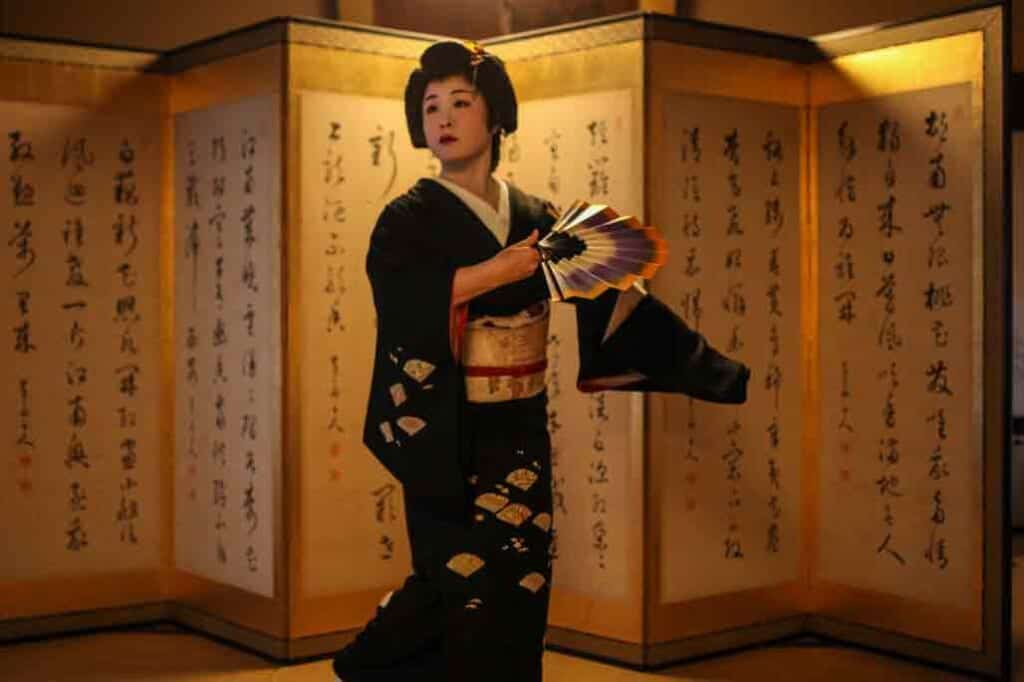
Shibukawa Donya is also where I had my first experience watching a Geisha dance. While the elegance of the performance is something that will remain with me for a long time, her stories put an even bigger smile on my face. I got to hear the geisha‘s daily preparation routine, which takes much longer than mine, and how they help each other out. But I still feel a little embarrassed about the heartfelt but maybe a little too strong laugh that she got out of me when she pretended to not be fluent in Japanese to comfort me when I confessed my (at best) mediocre language skills.
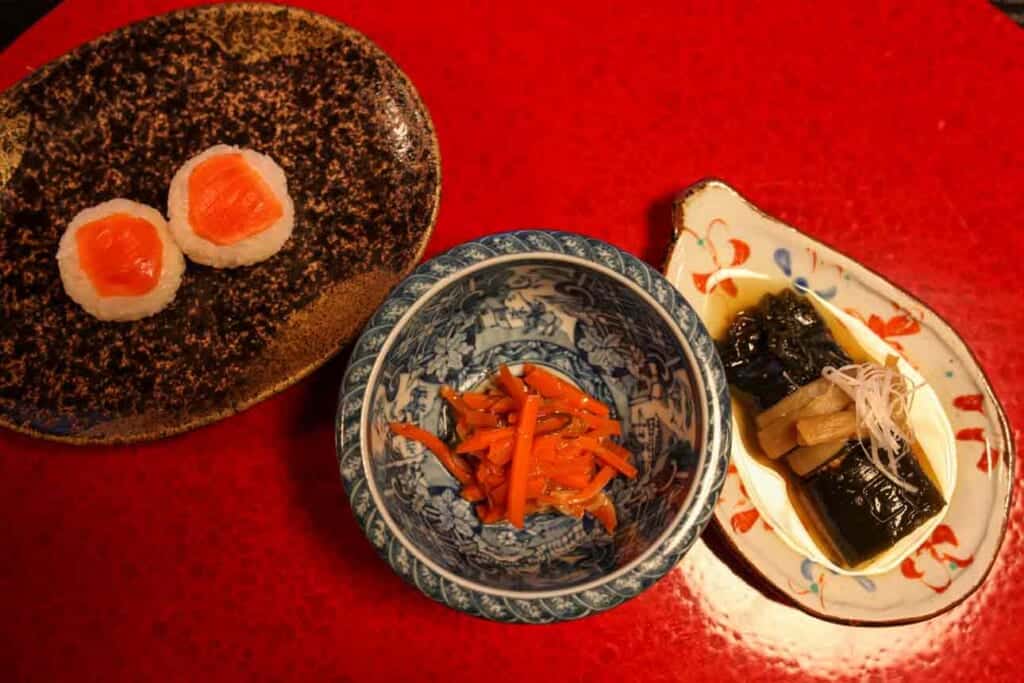
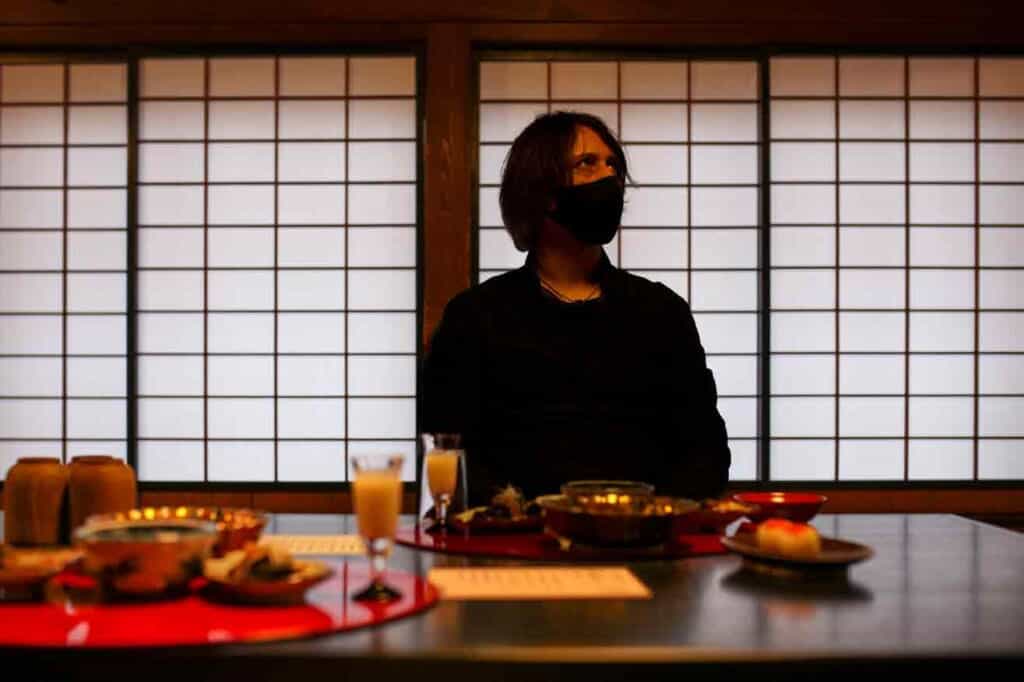
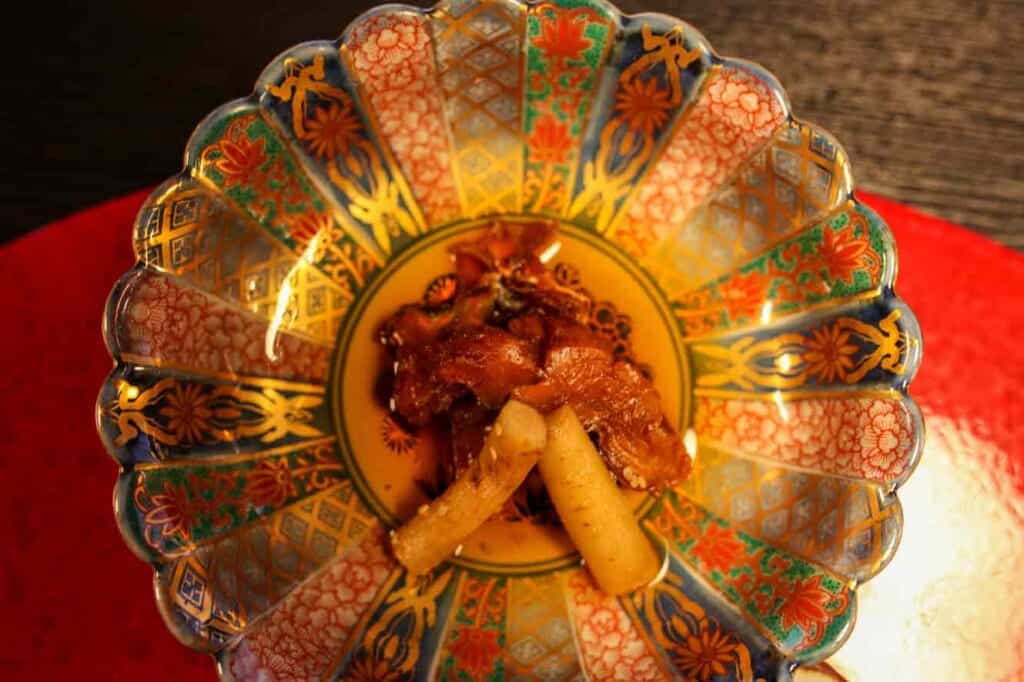
The unique taste but also the visual appeal of the food served in Shibukawa Donya was a perfect match for the elegant performance that I witnessed. The plates were so stylishly decorated that I had a hard time eating the lunch menu featuring local Aizu dishes. Each item on the menu including salted fish, tempura, pickled herring, and Aizu beef had a unique and delightful taste.
| Shibukawa Donya: 11 am – 9 pm. 20 min. walking distance from Aizu-Wakamatsu Station. |
Suehiro Sake Brewery: Tasting Award-Winning Fukushima Sake
While you can enjoy a drink of your choosing at Shibukawa Donya, those wanting a better understanding of the process behind the prefecture’s award-winning sake, Suehiro Sake Brewery is mere minutes away on foot. The brewery founded in 1850 is a family-owned business spanning eight generations.
The hour-long brewery tour takes visitors through the entire cycle of the sake brewing process starting with the rice selection and ending with bottling. The brewery master explained, to my shameful surprise, that the rice used for sake is cultivated separately from the rice used for cooking.
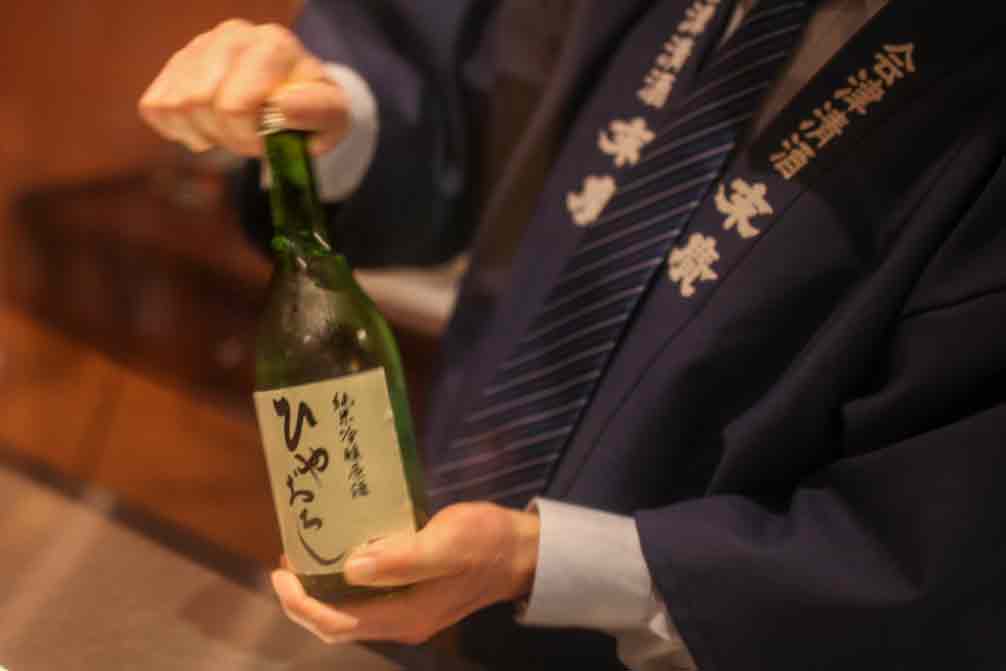
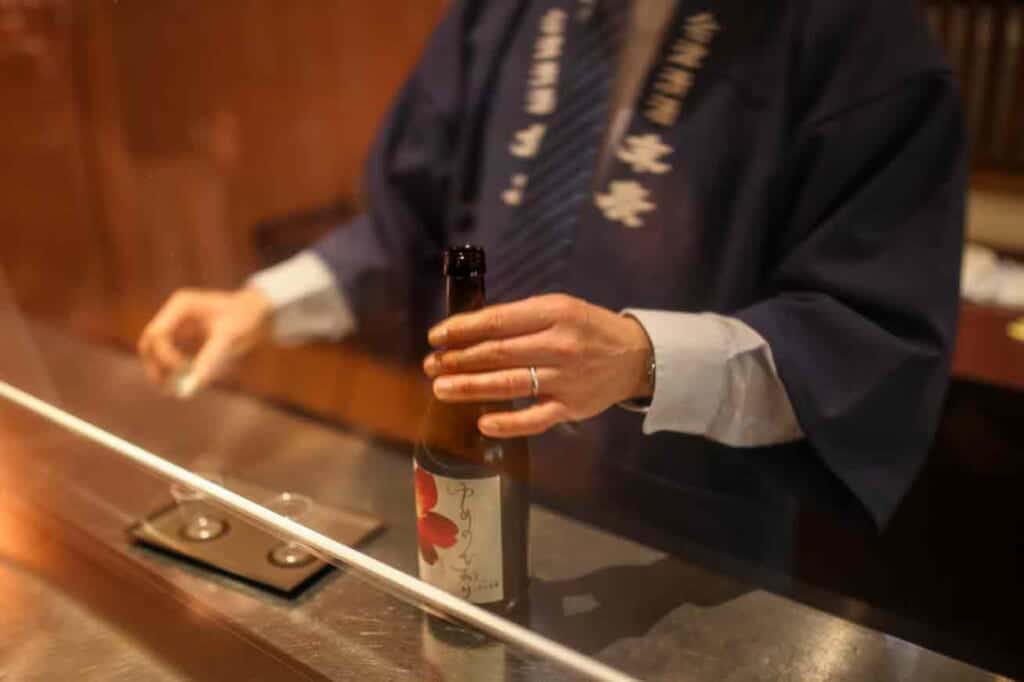
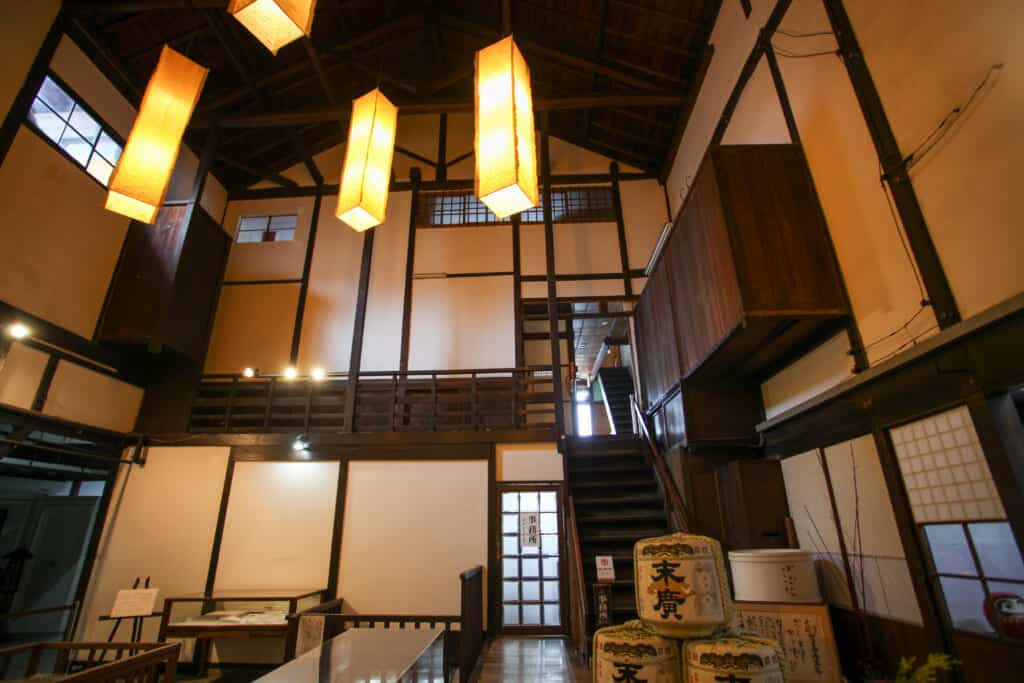
For those like me who are equally interested in sampling the sake can do so at the sake tasting and a small shop to browse through their sake. The master starts with lighter selections and gradually moves to sake with heavier taste. For those looking for something much lighter, the sake cake served in the cafe attached to the brewery is also a great option.
| Suehiro Sake Brewery: 10 am-5 pm, free sake tour. 19 min. walking distance from Aizu-Wakamatsu Station. |
Nagatoya: A Japanese Confectionary with Innovative Style
After a filling lunch at Shibukawa Donya and sake tasting at Suehiro Sake, the Nagatoya confectionary store, founded 160 years ago, is located on the same street as Shibukawa Donya and another historical store. The elegant design of the store is also reflected in the design of its mainly Aizu walnut-based sweets.
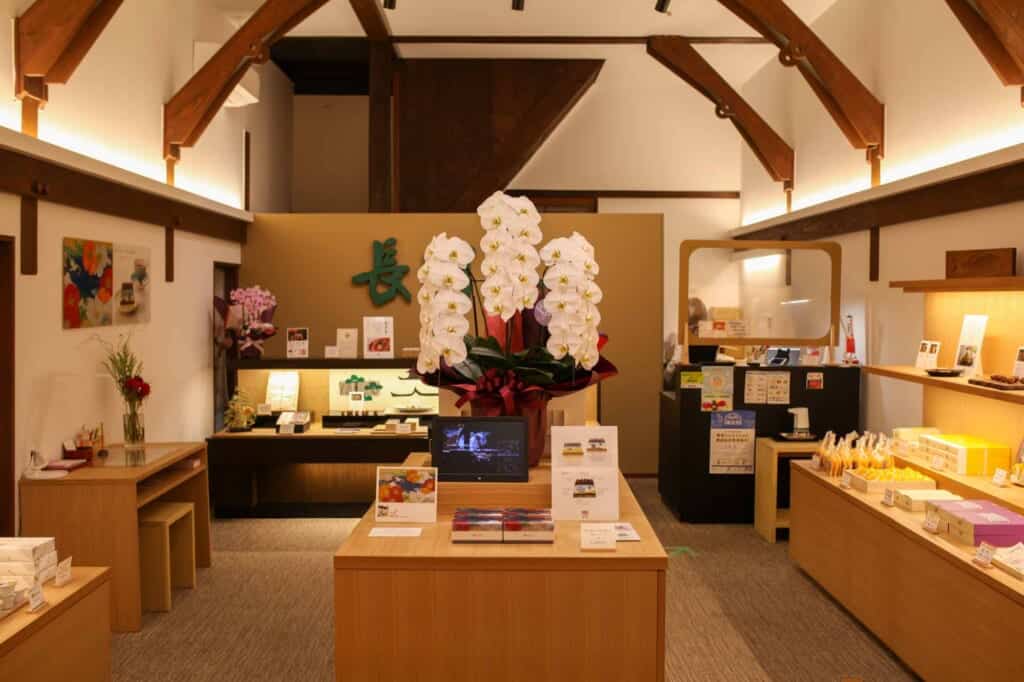
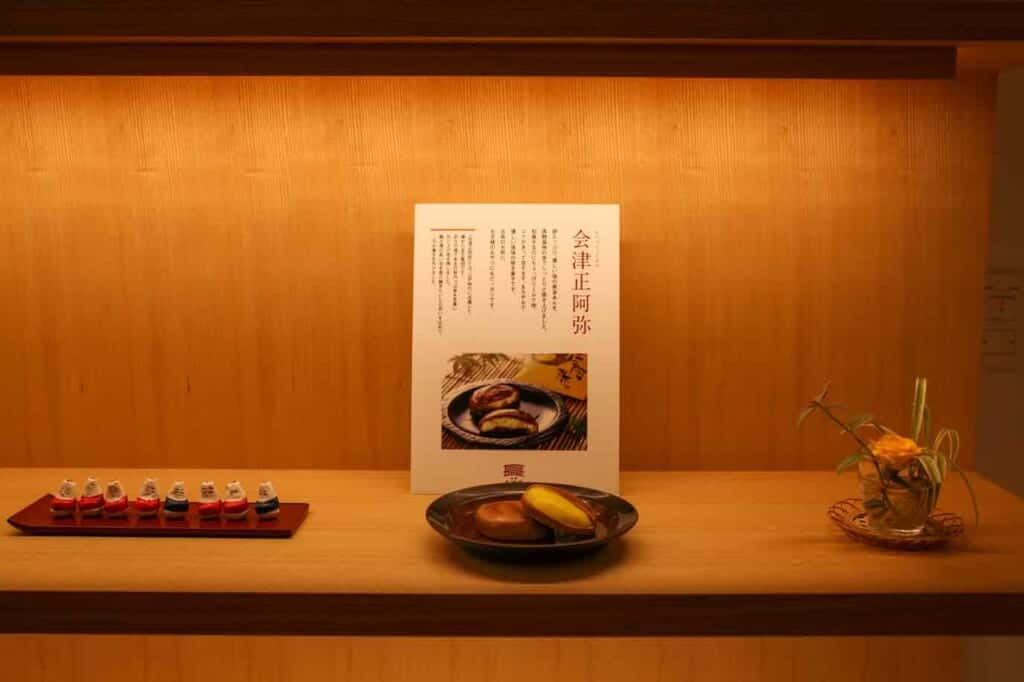
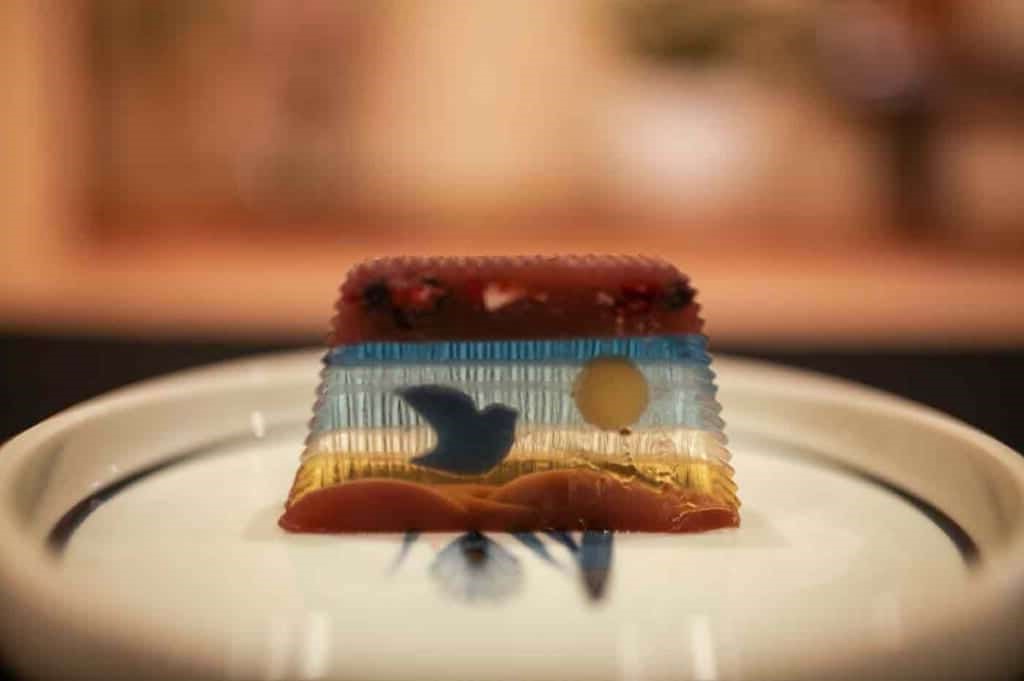
The highlight of the store is their sweet bean-based and wittily titled dessert, Fly Me to the Moon, also referred to as Yokan Fantasia. Each sliced piece of the dessert features a bird flying to the moon, with each slice offering slight variations of its design.
| Nagatoya Confectionary Store: 9:30 am-5.30 pm. 20 min. walking distance from Aizu-Wakamatsu Station. |
Pottery Experience in Aizu Misato
The historical Aizu region is also home to the Tohoku region’s oldest pottery practice reported to have started around the same time when roof tiles were produced for the Tsurugajo Castle renovation during the 15th century. The handicraft — referred to as aizu-hongo yaki — was further promoted and patronized by the lord of Aizu Domain in the early Edo Period. The pottery practice flourished during that period had soon expanded to the production of pottery for everyday use.
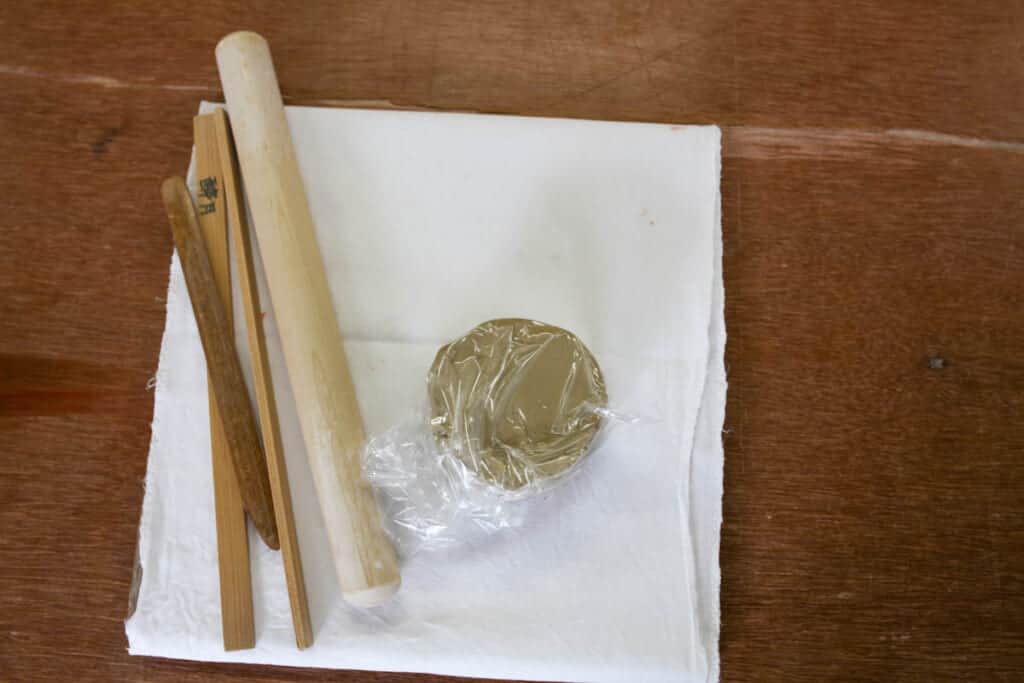
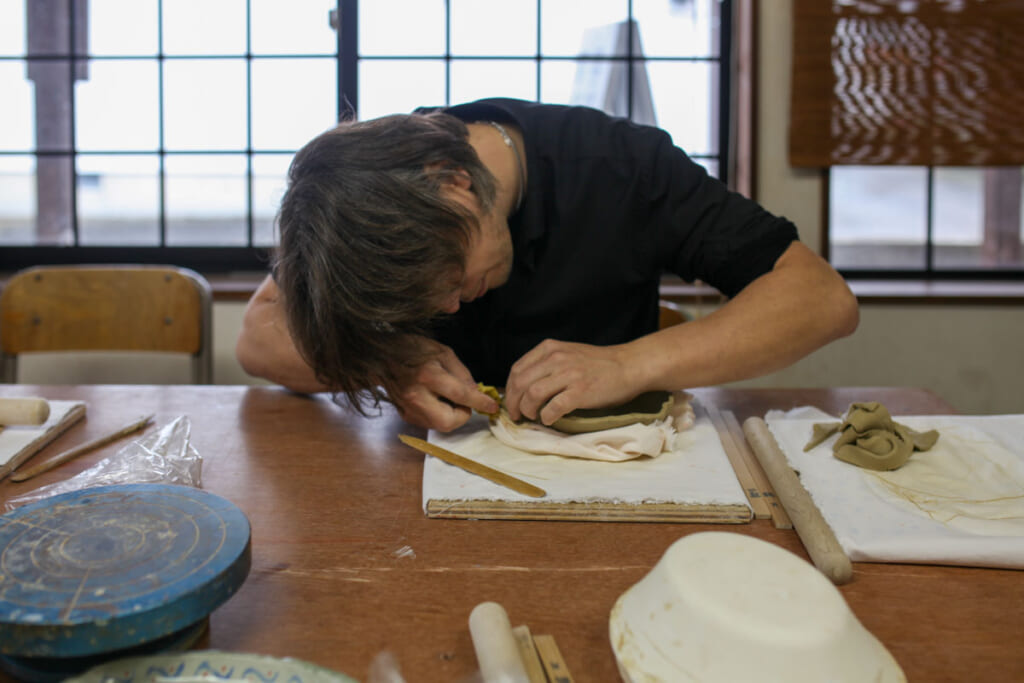
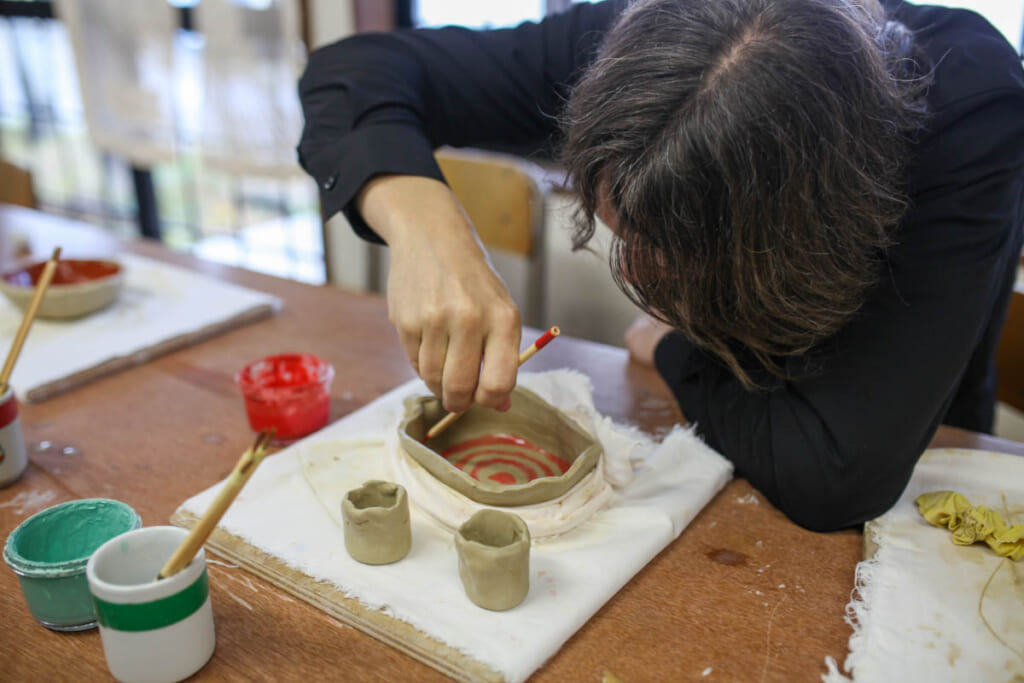
Today there are many pottery shops in Aizu Misato town where visitors can try their hand at shaping the clay into usable pottery. Our host at Suigetugama pottery studio and shop patiently guided the participants through the process, which involves a brief lecture on the method, picking the end product, shaping the clay, and finally applying the painting. The drying and the firing process required for the final products usually take a few additional weeks. It is a truly relaxing experience where one also gets to learn more about the history of the region.
There is also a shop attached to the studio featuring a large selection of the region’s famous pottery.
| Suigetugama Pottery Studio: Open daily between 9 am-4.30 pm except for Tuesdays. 35 min. walking distance from Minami-Wakamatsu Train station, or 8 min. by walk to Shikkidanchi Kumiai Mae bus stop and 10 min. bus ride to Infomeshonsentamae. |
How to Get to Fukushima Sites For the Autumn Season
Most of the sites featured in this post are within close proximity to each other. While the car is the easiest way to get the best out of the autumn season in Fukushima, the prefecture is also conveniently served by public transportation. The easiest way to get to the Aizu-Wakamatsu area from Japan‘s major cities is to take the Shinkansen to Koriyama Station (1h 20 min. to 1h 35 min. from Tokyo Station) and then take the local JR Ban-Etsusai Line (1h 16 min.) to Aizu-Wakamatsu.
We often hear of the resilient stories of Fukushima but the trip was a great reminder for me that the prefecture is also home to many joyful stories and experiences transmitted today thanks to the local’s admirable devotion to the preservation of their culture.
Sponsored by Fukushima Prefecture
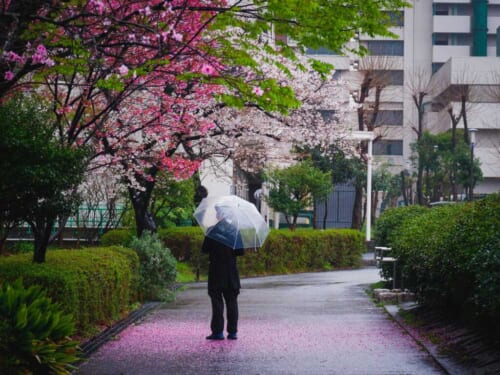
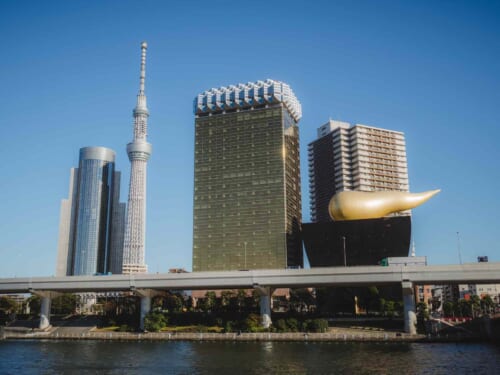

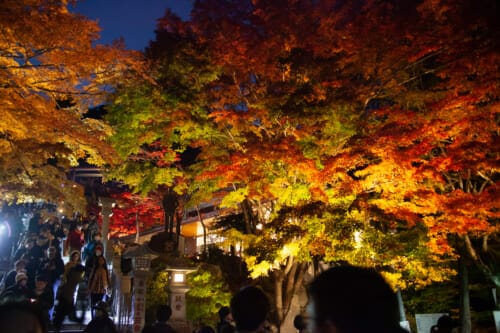
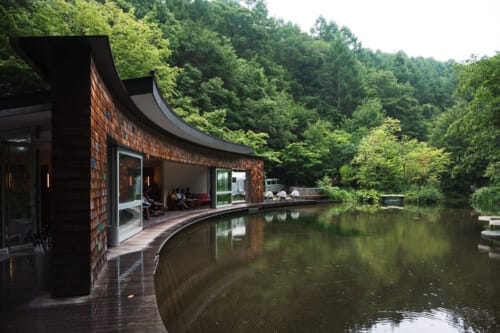
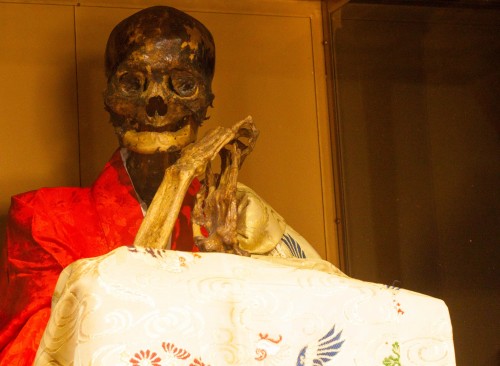
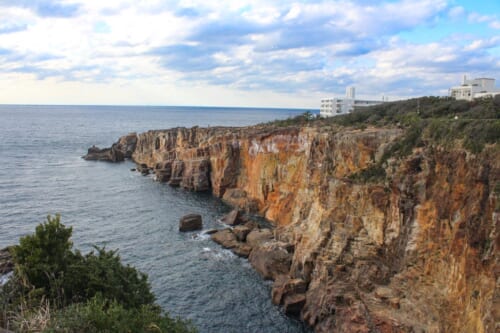
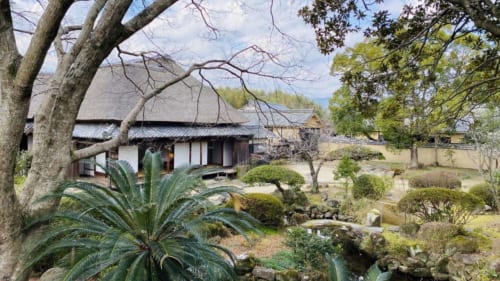

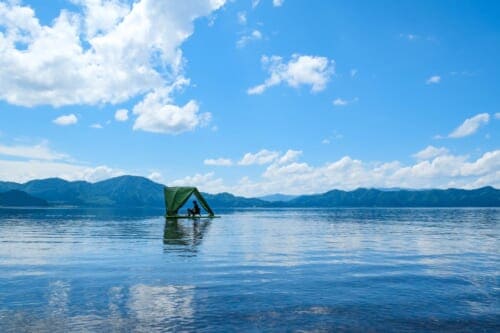
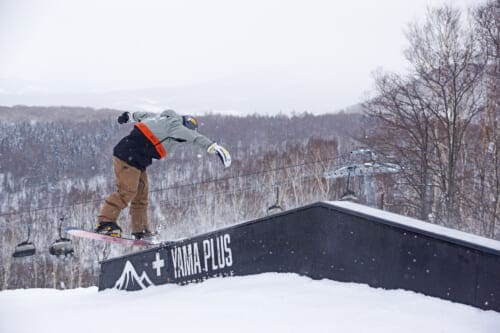


No Comments yet!